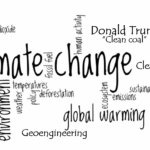November 8, 2016 – In a paper entitled, Evaluation of Economic, Land Use, and Land Use Emission Impacts of Substituting Non-GMO Crops for GMO in the US, Purdue University researchers in the Department of Agricultural Economics, questions what could happen if the anti-genetically-modified-crops movement leads to a ban. The study, published in the Journal of Environmental Protection last month, found that replacing GMO corn, soybeans and cotton with conventional varieties would lead to up to a 2.2% increase in food costs with poorest countries hit hardest. Findings also indicated that pasture and forest would have to be converted to cropland leading to increased greenhouse gas emissions from the loss of natural carbon sinks. The researchers argued that if countries planted GMO crops to the extent of their use in the United States that global greenhouse gas emissions would fall by 200 million tons and 800,000 hectares currently used for crops could be returned to forests and pastures.
Professor of Agricultural Economics, Wally Tyner, states, “Some of the same groups that want to reduce greenhouse gas emissions also want to ban GMOs. But you can’t have it both ways. Planting GMO crops is an effective way for agriculture to lower its carbon footprint.”
The research was done using a modeling tool developed at Purdue called the Global Trade Analysis Project (GTAP-BIO). Two hypothetical scenarios were input into the model. These were:
- What economic and environmental effects would a global ban on GMO corn, soybeans and cotton have?
- What would be the additional impact if global GMO adoption caught up to the U.S. and then a ban were implemented?
GTAP-BIO predicted overall increases in food costs under a global ban. It also predicted the United States would be the biggest beneficiary of the ban since its agribusiness was significantly more robust than other countries. On the other hand China and other major crop importers would find themselves paying more for food.
Banning of GMO would lead to a 3.1 million hectare (7.7 million acre) increase in cropland.
To the best of my knowledge this is the first time researchers have made the case for GMO crops as a means of fighting climate change.The researchers were not surprised about the economic consequences of a GMO ban. It was the model’s prediction about greenhouse gas emissions that was the unexpected “eye-opener.”
Back in May of this year in an article appearing in Scientific American, the National Academy of Sciences, in a 400-page report, concluded that GMOs are not a danger to the environment or human health. The report also concluded that the significance of GMO in the fight to deal with climate change was specifically related to adapting crops to the changes global warming would bring. Richard Amasino, a member of the Academy who participated in writing the report stated, “If we had the basic knowledge to enable corn to grow at higher temperatures, then we’ve got a buffer to climate change. But do we understand the basic biochemistry of how that might work? No.” In their report which looked at over 1,000 scientific papers on GMO none indicated that GMO could actually reduce our global carbon footprint.
This just adds a new wrinkle to the ongoing debate pro and con related to GMO.









